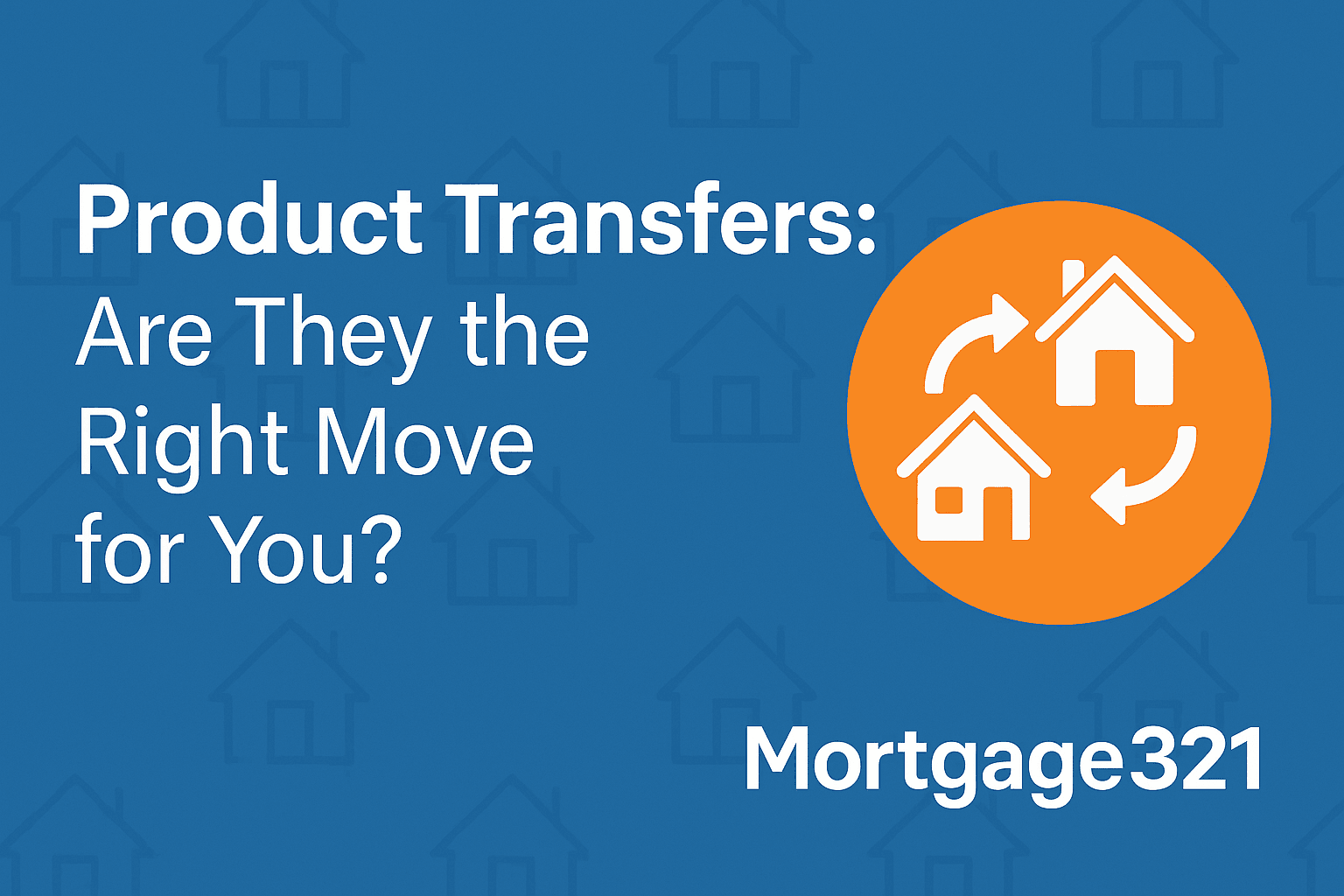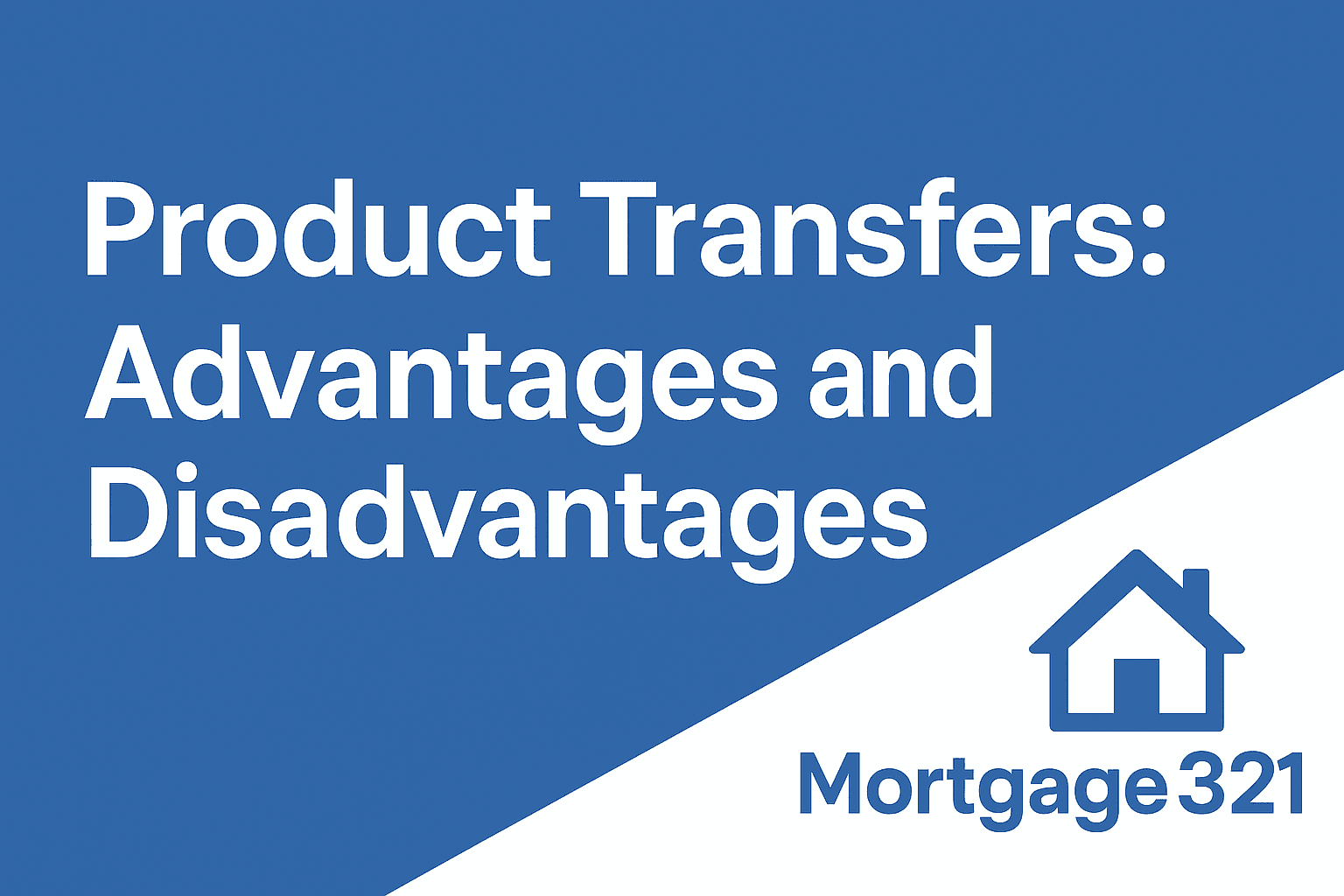Product Transfers: Are They the Right Move for You?
MP
As your initial mortgage deal comes to an end, you’ll likely be faced with a decision: do you stay with your current lender and switch to a new rate – known as a product transfer – or explore new lenders through a full remortgage?
At Mortgage321, we often help clients navigate this choice, especially when dealing with complex or non-standard mortgage scenarios. Let’s explore the pros and cons of product transfers, and how we can guide you through the process with clarity and confidence.

What Is a Product Transfer?
A product transfer occurs when you switch to a new mortgage deal with your existing lender, rather than moving to a new lender altogether. It's typically done at the end of a fixed or tracker rate period, when your current deal is expiring and you’re about to move onto the lender’s higher Standard Variable Rate (SVR).
Advantages of a Product Transfer
✅ No Legal Work or Valuation
Product transfers don’t usually require a solicitor or a new valuation, making the process simpler and faster.
✅ No Credit Check (in many cases)
For clients with adverse credit, a product transfer can be a great option, as some lenders don’t run a full credit search.
✅ Speed & Convenience
Transfers can often be completed within days, which is ideal if you're short on time or want to avoid paperwork.
✅ No Affordability Reassessment (in some scenarios)
Some lenders allow existing borrowers to switch without needing to pass a full affordability check – a useful route for clients whose income situation has changed.
✅ Avoids Early Repayment Charges (ERCs)
If timed correctly at the end of your fixed rate, you avoid any ERCs while still securing a new, more competitive rate.

Disadvantages of a Product Transfer
❌ May Not Offer the Best Deal
Sticking with your current lender could mean missing out on better rates or incentives (such as cashback or free legal work) available elsewhere.
❌ Limited Product Choice
You’re restricted to your lender’s current product range, which may not suit your circumstances or plans.
❌ Doesn’t Address Structural Issues
If your mortgage is no longer suitable – for example, if you're looking to raise capital, change ownership, extend your term, or switch repayment type – a full remortgage may be more appropriate.
How Mortgage321 Can Help
At Mortgage321, we do far more than tick boxes. With over 30 years of specialist mortgage experience, we take the time to review your current mortgage, financial situation, and future goals.
✅ We assess whether a product transfer or a full remortgage will deliver better long-term value
✅ We work with specialist lenders who cater to complex scenarios – adverse credit, self-employed income, interest-only, and buy-to-let
✅ We explain all your options in plain English, ensuring you make an informed decision
✅ We handle the legwork, negotiations, and paperwork – giving you peace of mind from start to finish
Even if a product transfer is the best option, we’ll ensure the timing is right and that you’re not missing out on savings or strategic advantages.

When Should You Review Your Mortgage?
We recommend reviewing your mortgage around 3-6 months before your current deal ends. This allows enough time to compare the market, avoid SVR penalties, and plan ahead – especially if your circumstances have changed.
In Summary
Product transfers can be a practical and cost-effective way to switch to a better deal, but they’re not always the best solution. With Mortgage321, you’ll get more than just a rate comparison – you’ll receive personalised, strategic advice based on your full financial picture.
Whether you’re approaching the end of your fixed term or simply wondering if you're on the right mortgage, we’re here to help.
📞 Get in touch with Mortgage321 today on 0800 612 8292 to book your free mortgage review.
